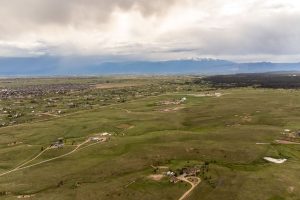Terry Stokka has lived in Black Forest for 29 years. He is president of the Friends of Black Forest, chairman of the Black Forest Land Use Committee and chairman of the Black Forest Water & Wells Committee.
It isnít often that one can take an expensive infrastructure project, turn it backward and come out with a better result than originally intended. This is exactly what might happen with what is known as the Loop proposal in eastern and northern Colorado Springs.Cherokee Metropolitan District serves 18,000 customers with water and wastewater disposal in the southeast part of Colorado Springs. Their water comes mainly from the Upper Black Squirrel Creek drainage. They have struggled to find sources of water for years so they purchased huge water rights on Sundance Ranch and Flying Horse North at Hodgen Road and Black Forest Road as well as at the county line on Black Forest Road. They connected new wells on Sundance Ranch to their storage tank on Tamlin Road and Marksheffel Road with a long 24-inch pipeline. They have openly stated their desire to be absorbed by Colorado Springs Utilities but CSU is hesitant because of the huge debt that Cherokee has from the pipeline project and other debt.Knowing that all the water providers in northern El Paso County are searching for more water sources, visionary people have suggested reversing the flow of the pipeline and pumping CSU water from the Southern Delivery System northward to supply Monument, Woodmoor, Palmer Lake, and Triview Metropolitan District with possible branches to Falcon. These water providers are enthusiastic about the project because it would mean they wouldnít have to drill new expensive wells that tend to decline in production as time goes on. As the accompanying picture shows, the second part of the project would be to take wastewater south for treatment along already existing sewage pipelines along I-25 to complete the loop.Cherokee and the northern water providers are strongly on board with the project and it has been endorsed by many high-ranking officials. The only obstacle seems to be the CSU buy-in and the $134 million price tag to build the pipelines and infrastructure to connect these water providers.In a new development, Tri-View Water has submitted a plan to build a pipeline from the CSU tank at Old Northgate Road and Highway 83 to their own tank off Higby Road. This 16-inch line would move water that Tri-View owns from Pueblo Reservoir and bring it north for their use. The project has a price tag of $24 million and is a small example of what people want the Loop to do. Unfortunately, this will probably mean that Tri-View is not interested in the Loop because they will have a loop of their own.So, what is the downside to the project? Other than money, the question of water availability looms large. CSU has water rights from the Colorado River through the Arkansas River that they are not currently using and it is tempting to sell that water. Do they have enough extra water to serve the thousands of potential customers in northern El Paso County? The water providers are concerned that if the drought continues and CSU is not able to get all of the water they own by law, the first customers to get cut might be the customers outside the city limits. This would leave all the northern El Paso County water providers ìhigh and dryî without water. Could that happen? Just last week, a CSU proposal was considered to limit the amount of water CSU could provide to new users. If adopted, that proposal could doom the loop project.We will just have to wait to see what the visionaries and water providers work out with this loop project.




